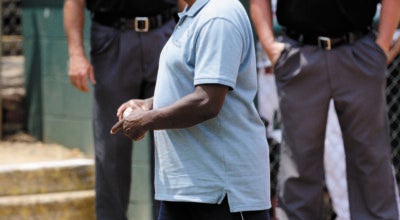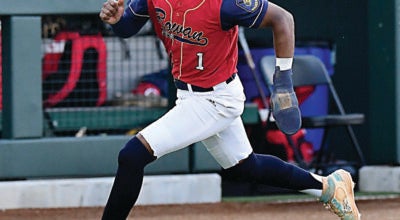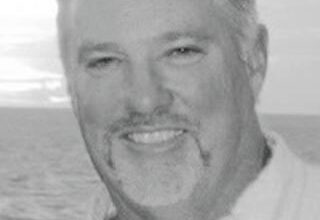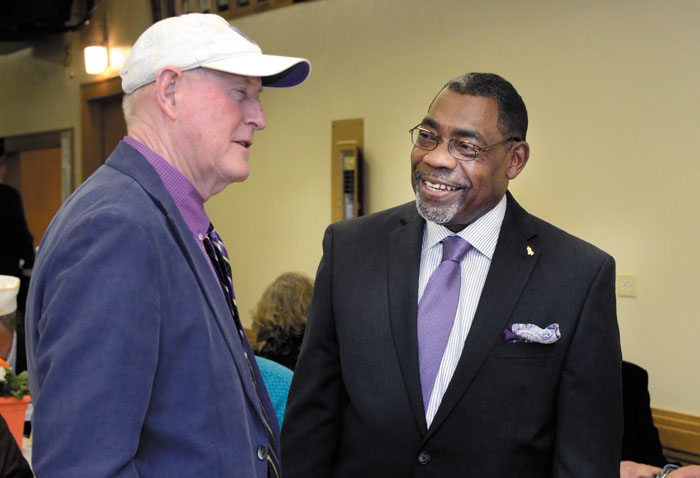American Legion baseball: Salisbury’s Bill Gillispie part of historic healing
Published 12:00 am Tuesday, July 21, 2015
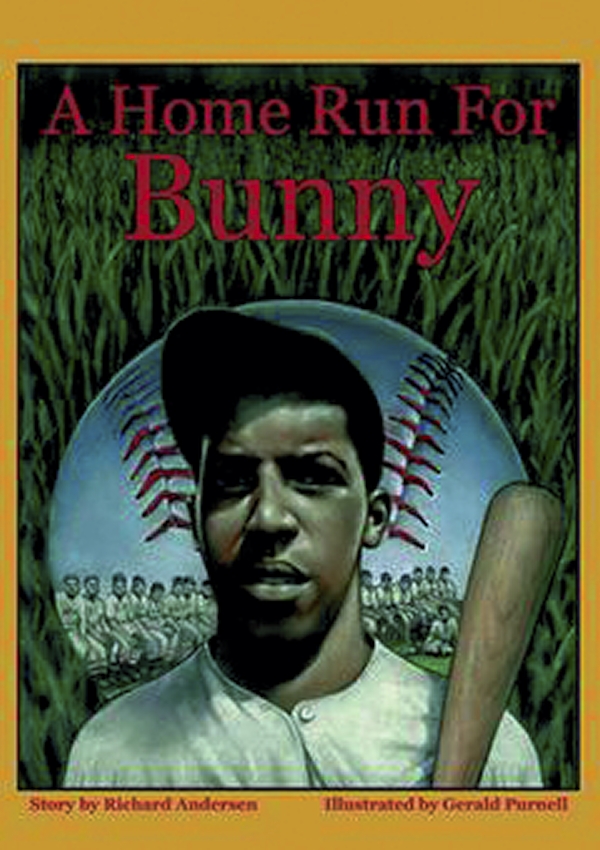
- A book by Richard Andersen tells the story of Ernest “Bunny” Taliaferro and his trip to the segregated South in 1934.
SALISBURY — Salisbury’s Bill Gillispie spent Father’s Day weekend riding a bus for 14 hours to Springfield, Mass.
“A very long trip but a good trip for a good cause,” Gillispie said.
Why Gillispie and his wife, Edna, were on that bus, along with the members of the Gastonia Post 23 American Legion baseball team, is a pretty amazing story.
Gillispie traveled to Springfield to make a short speech and to shake hands with a 97-year-old former second baseman named Tony King. By shaking hands with King, Gillispie was, in a way, connecting with Ernest “Bunny” Taliaferro, who died on his 50th birthday in 1967.
Gillispie had never heard of Taliaferro until a few months ago, but he’s become important to him.
“Bunny’s story is a one everyone should know about,” Gillispie said.
Gillispie is a baseball man from way back. In 1964, he was a teenage bolt of lightning nicknamed “Jet” and he and Gastonia teammate Elmore Hill integrated American Legion baseball, not just at Gastonia Post 23 but for all of North Carolina. Gillispie and Hill dodged rocks thrown at them in the outfield and were called unflattering names when they batted, but Gillispie kept hitting line drives and stealing bases and Hill responded to the taunts by launching baseballs over distant fences.
Gillispie and Hill entered the N.C. Legion Hall of Fame together, 50 years after they broke the color barrier, in induction ceremonies held in Salisbury.
Gillispie made history in 1964. He marvels that Taliaferro’s story, which is told in two books by Springfield college professor Richard Andersen, unfolded 30 years before his own and 13 years before Jackie Robinson’s pioneering efforts in Major League Baseball.
The first American Legion national championship was staged in 1926, and by 1934, American Legion ball was really catching on with youngsters who were 15 and 16. Hard-throwing pitcher Bob Feller was playing Legion ball in Iowa. Ted Williams was slugging Legion homers in California.
In Springfield, Mass., the star was Taliaferro, the town’s best athlete. He was an undefeated pitcher, a great center fielder, a base stealer and a home run hitter. His given name was Ernest, but he was known as “Bunny” because he never stopped running.
Taliaferro was Springfield’s only black player and he led a 15-man squad to the Massachusetts state championship and the New England championship. It was a stout team. Vic Raschi, a pitcher who won often for the New York Yankees in the late 1940s and early 1950s, didn’t make the final cut.
The New England championship qualified Springfield Post 21 to compete in the Eastern Regional, a six-team affair hosted in late August by Gastonia. Other sectional champions involved were Charlotte, Tampa, Cincinnati, Trenton, N.J. and Cumberland, Md. The winner would take on the Western Regional champion in a best-of-three series for the national title, with Games 1 and 3 set for Chicago’s Comiskey Park and Game 2 for Wrigley Field. Crowds of 25,000 were expected in Chicago.
Taliaferro, King and their teammates left home for the first time, traveling with manager Sid Harris and coach Babe Steere by train from Massachusetts to Connecticut, and then to New York. Then it was south to Washington, D.C., and finally down to Gastonia.
The segregated South of 1934 proved a shock. Marching bands were greeting the arriving teams at the train depot, but as soon as Taliaferro appeared, the music stopped abruptly.
“Gastonia is the city where I grew up, but it was just the times,” Gillispie said sadly. “I know what Elmore and I went through. I can’t imagine what it would’ve been like in 1934.”
Taliaferro was denied a bed at the hotel. He was registered as the coach’s valet and given a cot.
It got worse from there.
Springfield got in one practice session — in front of a hostile crowd estimated at 2,000. Andersen’s book “A Home Run for Bunny” states that Taliaferro was thrown six batting pitches and blasted six homers before it “started raining soda bottles, tin cans and half-eaten hot dogs.”
Not long after that, the Maryland and Florida teams refused to participate in the tournament if Taliaferro was allowed to take the field and American Legion officials expressed concerns about controlling the angry crowd if Taliaferro played.
A team meeting was called by Springfield and two options were offered by the grown-ups. Play without Taliaferro or return home.
It was King, the captain, who spoke up. He said, “Bunny is a member of this team. If he doesn’t play, neither do I.”
That feeling was unanimous. Every player prioritized team unity ahead of their opportunity to compete for a regional — and potentially a national — championship.
The team sneaked out of the hotel, boarded a train and headed back home.
“Those kids made a stand for a teammate,” Gillispie said. “Can you imagine 15-year-olds doing that?”
The withdrawal from the tournament by Springfield was noted in the sports pages of the Salisbury Post, although Taliaferro wasn’t mentioned by name. Springfield was supposed to play Trenton, N.J., in the first round and the schedule had to be adjusted.
Cumberland, Md., beat Charlotte, 6-5, in the regional championship game and the Maryland squad then went on to top New Orleans for the national championship.
Springfield wanted nothing more to do with American Legion baseball for decades, but 1934 was never forgotten. In 2003, a stone marker stating “Brothers all are we” was erected at the Forest Park baseball facility in Springfield to honor the 1934 team.
The Boston Red Sox, the last team in MLB to integrate their roster in 1959, had the two living members of the 1934 team — King and Danny Keyes — throw out first pitches at Fenway Park in 2010.
Keyes died in 2012, leaving King as the last Post 21 survivor.
That monument at the Springfield baseball field led to Andersen researching the story and his books brought Taliaferro’s tale back to light. Those books found their way to Gastonia mayor John Bridgeman last year.
Bridgeman was dismayed that Gastonia had such a negative moment in its history and wrote a letter of apology to Springfield mayor Domenic Sarno. The mayors discussed a home-and-away baseball series between their current Legion teams — and Gastonia visited Springfield in June.
Gillispie, because of his place in history, was one of the ambassadors chosen to represent Gastonia.
Gastonia played two games. The third was rained out, but ceremonies went on as planned. King threw out the first pitch. An emotional Gillispie was a speaker.
“They treated us like kings in Springfield,” Gillispie said. “We were on the radio. We were interviewed by all the area newspapers.”
Gillispie had a chance to visit the Basketball Hall of Fame on his trip, but it provided fewer memories than the chills he got standing with the Gastonia and Springfield teams as they healed a wound from 81 years ago.
“It was history,” Gillispie said. “It put some tears in my eyes, but I was elated to be part of it.”
Springfield plans to make a return visit to Gastonia in 2016.


